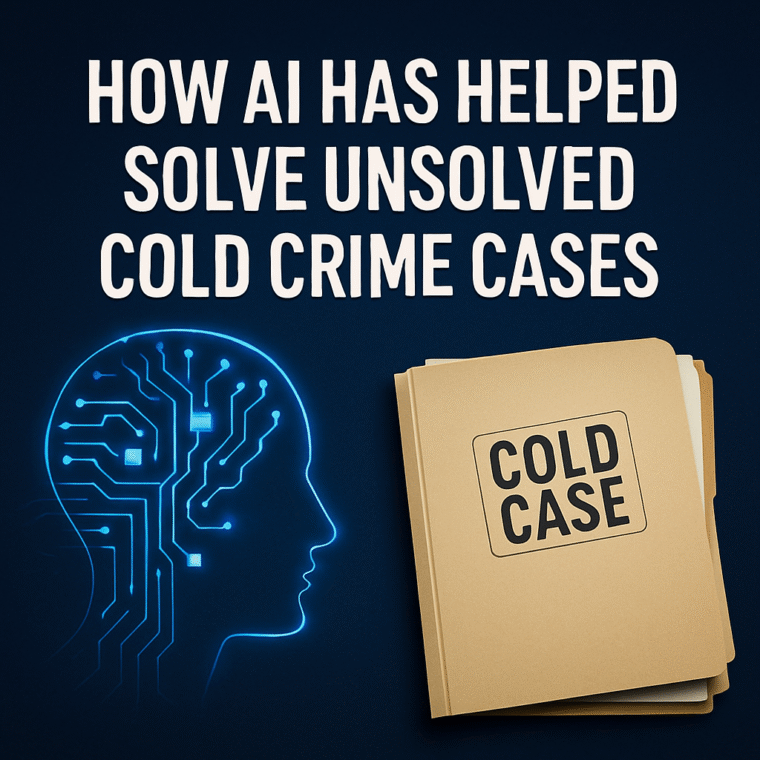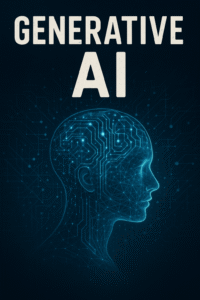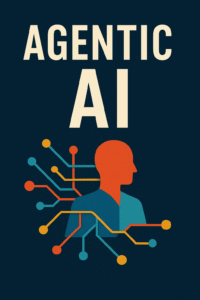Introduction
For decades, cold cases have haunted families and law enforcement agencies. These are crimes—often murders or missing person cases—that have gone unsolved due to a lack of evidence, leads, or technological limitations. However, the integration of Artificial Intelligence (AI) into investigative tools has provided a new lens to revisit and resolve such cases. Through machine learning, facial recognition, forensic genealogy, natural language processing (NLP), and audio analysis, AI is helping bring justice where hope was once lost.
Here are several real-life cold cases that were solved or significantly advanced using AI-related technologies.
1. 🧬 The Golden State Killer (California, USA)
- Year Solved: 2018
- Crime Span: 1970s–1980s
- Suspect: Joseph James DeAngelo
- Technology Used: AI-assisted genetic genealogy
Though the foundational technology was forensic DNA matching, AI-powered tools were used to search public genetic databases, like GEDmatch, and build family trees from thousands of DNA samples. AI-driven genealogy services narrowed down a pool of suspects based on distant familial matches, dramatically reducing investigation time.
Impact: This case was a milestone that inspired law enforcement nationwide to adopt genetic genealogy—powered by AI—for cold case resolution.
2. 🧑💻 Murder of Carla Walker (Texas, USA)
- Year Solved: 2020
- Crime Year: 1974
- Suspect: Glen Samuel McCurley
- Technology Used: Machine Learning + DNA Evidence
The Fort Worth Police Department used AI tools to analyze degraded DNA evidence, applying machine learning models to identify viable genetic markers. The case saw success after DNA from a soda can matched the suspect using advanced algorithms to align fragmented data with crime scene evidence.
Impact: Demonstrated how AI can enhance degraded or limited physical evidence.
3. 🧠 Facial Recognition & Jane Doe Cases
- Example: “Buckskin Girl” (Ohio, USA)
- Year Identified: 2018 (after 37 years)
- Real Name: Marcia King
- Technology Used: AI-enhanced facial reconstruction + genetic genealogy
AI-assisted facial approximation software, using skull and tissue data, helped reconstruct a lifelike image of the victim. Facial recognition matched this image against missing person databases. Later, genetic genealogy confirmed the identity.
Impact: Provided closure to a family after nearly four decades and validated AI-assisted reconstruction for victim ID.
4. 🔊 The Delphi Murders (Indiana, USA)
- Ongoing (as of 2024)
- Crime Year: 2017
- Victims: Liberty German and Abigail Williams
- Technology Used: AI-enhanced voice & audio analysis
Authorities released a chilling voice clip captured on a victim’s phone. AI voice analysis tools enhanced the audio, removed noise, and helped narrow potential matches by scanning against national voice datasets. While the case remains under legal process, the use of AI has pushed it forward significantly.
Impact: Demonstrated how AI can turn low-quality digital evidence into actionable leads.
5. 📃 NYPD and NLP on Cold Case Files
- Application: Ongoing in NYC Cold Case Units
- Technology Used: Natural Language Processing (NLP)
The NYPD used AI-driven NLP to scan over 800,000 case files, searching for textual patterns—such as weapon use, victim demographics, and suspect behavior—that could link crimes or identify new leads. The system flagged previously overlooked connections between cases that led to suspect re-evaluation.
Impact: AI transformed inaccessible archives into a searchable and actionable crime-solving resource.
6. 📍 Predictive AI in Crime Mapping
- Tool: Palantir + IBM Watson
- Application: Crime pattern analysis for cold cases (used in cities like Chicago and Los Angeles)
Machine learning algorithms analyze geographic and temporal patterns to link serial crimes. AI systems suggested correlations between unsolved cases that human detectives had missed, helping cluster cold cases for re-investigation.
Impact: Allowed departments to re-prioritize cases with the highest probability of resolution.
Ethical Considerations
While AI has accelerated progress in solving cold cases, it raises important ethical and legal questions:
- Privacy risks in using public genetic data.
- Racial and gender bias in facial recognition systems.
- Accountability: When AI makes a suggestion, who takes responsibility?
These concerns are leading to growing calls for AI transparency, human oversight, and regulatory frameworks in law enforcement.
Conclusion
AI has proven to be a game-changer in solving cold crime cases, transforming vast troves of untouched evidence and unstructured data into new leads, identifications, and even convictions. While the technology is still evolving, its track record already speaks volumes: lives changed, justice served, and hope restored. With ethical use and responsible governance, AI will continue to shine a light into the darkest corners of unsolved crime.












